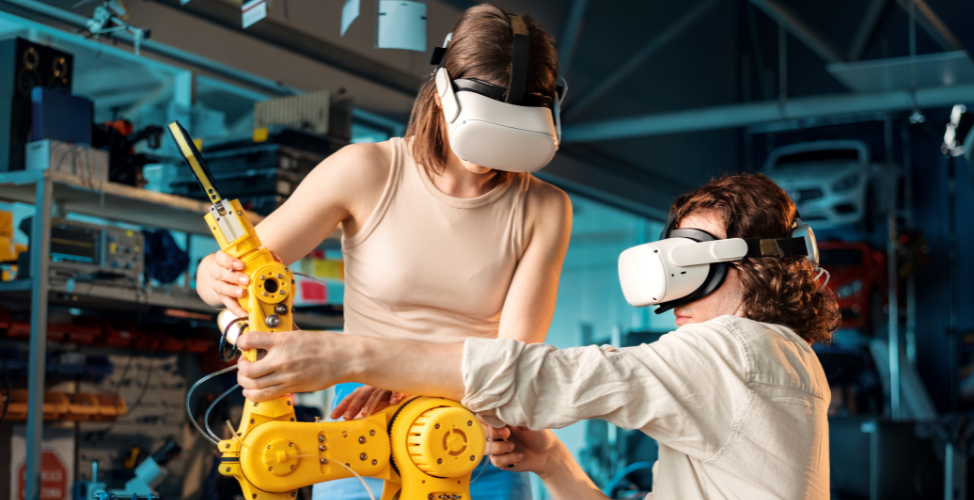Customer Experience Technology: Driving Personalized and Seamless Interactions
Companies are using advanced customer experience technology to meet and beyond consumers’ expectations for frictionless, personalized interactions across all touchpoints. With previously unheard-of levels of customisation, responsiveness, and engagement made possible by this technology revolution, businesses are changing the way they interact with their clientele.

The Changing Landscape of Customer Interactions
The relationship between businesses and their customers has undergone dramatic transformation in recent years, driven by shifting expectations and technological capabilities. Understanding these changes is crucial for organizations seeking to leverage customer experience technology effectively.
Evolution of Customer Experience Expectations
Today’s consumers have fundamentally different expectations than previous generations. Raised on the instant gratification of digital transformation platforms, modern customers demand immediate responses, personalized interactions, and seamless experiences across all channels. The benchmark for exceptional service has been permanently elevated by digital pioneers like Amazon, Netflix, and Uber, who have made hyper-personalization and convenience the new normal.
Customer experience technology has evolved in response to these changing expectations, with solutions that enable businesses to deliver the speed, relevance, and personalization that consumers now demand. From AI-powered chatbots that provide instant responses to sophisticated recommendation engines that anticipate customer needs, these technologies help organizations meet heightened expectations without exponentially increasing costs.
Digital-First Customer Engagement Models
The COVID-19 pandemic accelerated the already growing shift toward digital-first engagement models, fundamentally changing how businesses interact with their customers. While digital channels were once considered complementary to in-person experiences, they now represent the primary engagement point for many businesses across sectors.
Customer experience technology powers these digital-first models through integrated solutions that maintain consistency across touchpoints while adapting to the unique characteristics of each channel. Mobile apps, web portals, social media platforms, and messaging services are now seamlessly connected through underlying technology platforms that maintain context and continuity.
Watch more: The Future of AI in Customer Experience: Trends and Innovations
Impact of Technological Advancements
Advancements in computing power, connectivity, and analytics have dramatically expanded the capabilities of customer experience technology. Cloud computing has made sophisticated experience platforms accessible to organizations of all sizes, removing the need for massive upfront infrastructure investments. Edge computing is enabling real-time personalization and response capabilities previously impossible due to latency constraints.
The democratization of advanced analytics and artificial intelligence has perhaps had the most profound impact on customer experience technology. Tools that were once available only to technology giants with massive data science teams are now accessible through APIs and cloud services, allowing organizations of all sizes to implement intelligent, adaptive customer experiences.
Advanced Technologies Transforming Customer Experience
While the core components of customer experience technology deliver significant value, several emerging technologies are pushing the boundaries of what’s possible in customer engagement.
Augmented and Virtual Reality
AR and VR technologies are transforming customer experience in industries ranging from retail to real estate. Virtual showrooms allow customers to explore products from the comfort of their homes, while augmented reality applications let them visualize how products would look in their own environments.
Customer experience technology now includes development platforms specifically designed for creating AR/VR experiences that integrate with existing commerce and service capabilities. These tools have dramatically reduced implementation costs, making immersive experiences accessible to mid-sized businesses rather than just enterprise organizations.
Beyond shopping applications, AR is enhancing service experiences through capabilities like visual guidance. Field service technicians can receive augmented instructions overlaid on equipment they’re repairing, while customers can use similar technology to get visual guidance for self-service troubleshooting.
Internet of Things (IoT) Integration
Connected devices are creating entirely new channels for customer engagement, with IoT integration becoming an increasingly important component of customer experience technology stacks. Smart appliances, connected vehicles, wearable devices, and home automation systems all represent new touchpoints in the customer relationship.
IoT devices generate rich data on product usage and customer behavior, providing insights that help brands deliver more personalized and relevant experiences. A skilled customer experience agency can harness this data by leveraging advanced platforms equipped with IoT data processing capabilities—designed to manage the high volume and speed of information these devices produce. By turning raw data into actionable insights, these agencies help businesses create smarter, more responsive customer journeys.
Service models are being transformed through IoT-enabled predictive maintenance, where connected products can self-diagnose issues and trigger service interventions before customers even notice problems. This capability is creating entirely new relationship paradigms between businesses and their customers, shifting from reactive to proactive engagement models.
Read more: Why Digital Customer Experience Strategy is Essential for Brand Growth
Blockchain in Customer Experience
Though still emerging, blockchain technology holds significant promise for addressing persistent customer experience challenges around trust, transparency, and data ownership. Customer experience technology providers are beginning to incorporate blockchain capabilities for use cases like verified product authenticity, transparent supply chains, and customer loyalty programs.
Blockchain-based identity solutions offer potential improvements to authentication experiences, reducing friction while enhancing security. Smart contracts are enabling more transparent and automatically enforced guarantees, particularly valuable in industries like insurance and financial services.
Customer data ownership represents perhaps the most transformative blockchain application in customer experience technology. Emerging solutions allow customers to control their own data via personal data vaults, granting temporary, revocable access to businesses in exchange for personalized services – fundamentally rebalancing the data relationship between organizations and their customers.
Your Customers, Perfectly Understood: SmartOSC’s Experience Revolution
SmartOSC has established itself as a pioneer in customer experience technology, developing a proprietary platform that combines artificial intelligence, advanced analytics, and seamless omnichannel capabilities into a unified solution for enterprise organizations.
The company’s flagship offering, ExperienceDNA, represents a step-change in how businesses understand and engage their customers. Unlike point solutions that address single channels or limited use cases, ExperienceDNA provides a comprehensive infrastructure for orchestrating personalized experiences across touchpoints while continuously learning from each interaction.
What distinguishes SmartOSC’s approach to customer experience technology is their emphasis on emotional intelligence alongside technical capabilities. Their systems incorporate sophisticated sentiment analysis and psychological models that help businesses connect with customers on a human level, even through digital channels.
Conclusion
The most successful implementations of customer experience technology share common characteristics: they integrate capabilities across the entire customer journey rather than focusing on isolated touchpoints; they balance automation with human empathy; and they continuously evolve based on customer feedback and behavior.
Contact us right now to discover how SmartOSC can help you revolutionize your customer journey with cutting-edge CX solutions customized to your company’s objectives.


